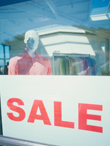 As analyzed and reported in a recent article on blog.wholesalecentral.com, consumers have new shopping behaviors that may seem disruptive to traditional advertising and selling methods that are part of your current business model. With the growing awareness of social media and smartphone capabilities, as well as other innovative channels used to research, select, transact and collect products, you may be rethinking your advertising plan of action, and rightfully so.
As analyzed and reported in a recent article on blog.wholesalecentral.com, consumers have new shopping behaviors that may seem disruptive to traditional advertising and selling methods that are part of your current business model. With the growing awareness of social media and smartphone capabilities, as well as other innovative channels used to research, select, transact and collect products, you may be rethinking your advertising plan of action, and rightfully so.
Nonetheless, there remains a traditional form of marketing that doesn’t involve tech tutorials or search engine optimization (SEO) know-how. In-store marketing provides you with the opportunity to present a clear and direct message to your target customer, the one already walking your aisles or approaching your checkout counter.
Independent Retailers Find an in with In-store Marketing
It’s true that sometimes the merchandising display for a certain product can make or break a sale. For that very reason, wholesalers or retail suppliers, such as Monster Trendz, Inc., a jewelry and souvenir supplier, have invested a great deal in developing customized displays. In a recent interview, Matt Huusko, founder and CEO of Monster Trendz, emphasizes that, “Even when we have a really good product, without fixtures or displays it never really pulls in all the possible potential sales. Therefore, we have our own display factory and no product is sold without the appropriate merchandising displays and graphics.” Presentation plays a large percentage in perception.
Are you doing all you can do to entice your customer at the point of purchase? Although merchandising displays are important, in-store marketing is more than product setup. In-store promotion can have an interactive feel as well, such as experts on-site to give advice and staff presenting product demonstrations. You can also add to your ad campaign by displaying ads on-site. With these in-store promotions you may not only change a shopper’s perception of a product, but change their purchase behavior as well.
As Dina Howell, well-received pioneer in shopper marketing and former vice president of global media and brand operations at Proctor & Gamble, claims that the goal is to have an impact on a shopper’s “First Moment of Truth.” Howell further explains that the First Moment of Truth is, “the first seconds when someone notices an item on a store shelf and makes their decision whether to buy or not.”
Independent Retailers Taking Tradition and Using It Right
In-store marketing is strategic marketing in its purest form. The key is to approach it with a fresher face and a more proactive attitude. Take for instance, Vlasic, which has settled on reaching a customer’s First Moment of Truth in more than just the pickle aisle. As reported by The New York Times, Vlasic is partaking in a new in-store ad campaign by BBDO New York, part of the BBDO Worldwide division of the Omnicom Group.
Not only will ads appear outside the pickle aisle and on carts, but these ad displays will dispense coupons and recipes. It gets more creative, as “shoppers picking up ground beef, for example, encounter the [Vlasic] stork near the meat section, where a speech balloon near his ample beak says, ‘Pro tip: Serve your burgers with a Vlasic pickle. Amateur tip: Don’t.’” Your customers may walk out of the store forgetting the mustard and ketchup, but in-store marketing helped land a jar of Vlasic pickles a spot on the checkout line.